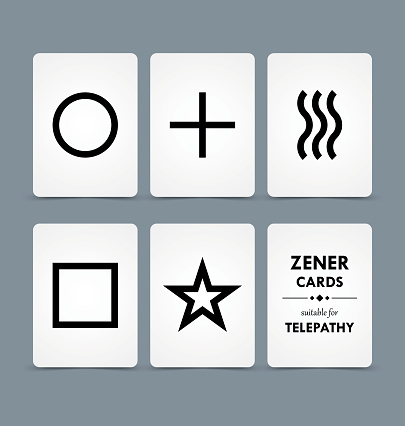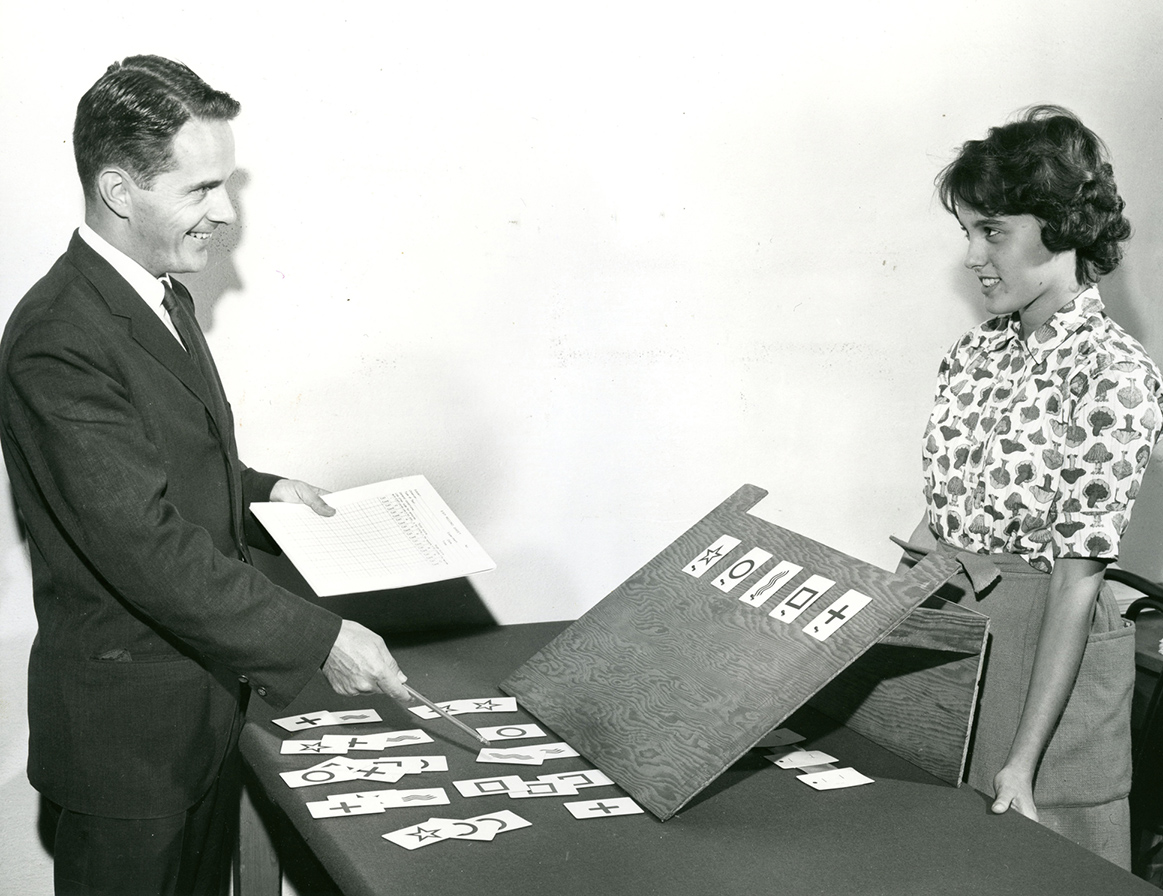Clairvoyance
Clairvoyance (/klɛərˈvɔɪ.əns/; from French clair "clear," and voyance "vision") is the magical ability to gain information about an object, person, location, or physical event through extrasensory perception. Any person who is claimed to have such ability is said to be a clairvoyant ("one who sees clearly").
Rudolf Steiner, famous as a clairvoyant himself, claimed that for a clairvoyant, it is easy to confuse his own emotional and spiritual being with the objective spiritual world.
Use of the term
Pertaining to the ability of clear-sightedness, clairvoyance refers to the ability to see persons and events that are distant in time or space. It can be divided into roughly three classes:
- Precognition, the ability to perceive or predict future events.
- Retrocognition, the ability to see past events.
- Remote viewing, the perception of contemporary events happening outside the range of normal perception.
In history and religion
Throughout history, there have been numerous places and times in which people have claimed themselves or others to be clairvoyant.
In several religions, stories of certain individuals being able to see things far removed from their immediate sensory perception are commonplace, especially within Pagan religions where oracles were used. Prophecy often involved some degree of clairvoyance, especially when future events were predicted. This ability has sometimes been attributed to a higher power rather than to the person performing it, as in the case of Texas folk healer, Don Pedro Jaramillo, who appeared to have a higher knowledge of things he could not know, and was considered clairvoyant by those who came to him for healing.
Christianity
A number of Christian saints were said to be able to see or know things that were far removed from their immediate sensory perception as a kind of gift from God, including Columba of Iona, Padre Pio and Anne Catherine Emmerich. Jesus Christ in the Gospels is also recorded as being able to know things that were far removed from his immediate human perception. Some Christians today also share the same claim.
Jainism
In Jainism, clairvoyance is regarded as one of the five kinds of knowledge. The beings of Hell and heaven (devas) are said to possess clairvoyance by birth. According to Jain text Sarvārthasiddhi, "this kind of knowledge has been called avadhi as it ascertains matter in downward range or knows objects within limits." Clairvoyance is also one of the abilities gained by anyone who has achieved enlightenment.
Scientific research into clairvoyance
The earliest record of somnambulist clairvoyance is credited to the Marquis de Puységur, a follower of Franz Mesmer, who in 1784 was treating a local dull-witted peasant named Victor Race. During treatment, Race reportedly would go into trance and undergo a personality change, becoming fluent and articulate, and giving diagnosis and prescription for his own disease as well as those of others. Clairvoyance was a reported ability of some mediums during the spiritualist period of the late 19th and early 20th centuries, and psychics of many descriptions have claimed clairvoyant ability up to the present day.
Clairvoyance experiments were reported in 1884 by Charles Richet. Playing cards were enclosed in envelopes and a subject put under hypnosis attempted to identify them. The subject was reported to have been successful in a series of 133 trials but the results dropped to chance level when performed before a group of scientists in Cambridge. J. M. Peirce and E. C. Pickering reported a similar experiment in which they tested 36 subjects over 23,384 trials which did not obtain above chance scores.
Ivor Lloyd Tuckett and Joseph McCabe analyzed early cases of clairvoyance and came to the conclusion they were best explained by coincidence or fraud. In 1919, the magician P.T. Selbit staged a séance at his own flat in Bloomsbury. The spiritualist Arthur Conan Doyle attended the séance and declared the clairvoyance manifestations to be genuine.
Duke University study
A significant development in clairvoyance research came in the 1930s, when J. B. Rhine, a parapsychologist at Duke University, introduced a standard methodology, with a standard statistical approach to analyzing data, as part of his research into extrasensory perception. A number of psychological departments attempted to repeat Rhine's experiments, with failure. W. S. Cox from Princeton University with 132 subjects produced 25,064 trials in a playing card ESP experiment. Cox concluded, "There is no evidence of extrasensory perception either in the 'average man' or of the group investigated or in any particular individual of that group. The discrepancy between these results and those obtained by Rhine is due either to uncontrollable factors in experimental procedure or to the difference in the subjects." Four other psychological departments failed to replicate Rhine's results. It was revealed that Rhine's experiments contained methodological flaws and procedural errors.
Eileen Garrett was tested by Rhine at Duke University in 1933 with Zener cards. Certain symbols that were placed on the cards and sealed in an envelope, and she was asked to guess their contents. She performed poorly and later criticized the tests by claiming the cards lacked a psychic energy called "energy stimulus" and that she could not perform clairvoyance to order. The parapsychologist Samuel Soal and his colleagues tested Garrett in May 1937. Most of the experiments were carried out in the Psychological Laboratory at the University College London. A total of over 12,000 guesses were recorded but Garrett failed to produce above chance level. In his report Soal wrote "In the case of Mrs. Eileen Garrett we fail to find the slightest confirmation of Dr. J. B. Rhine's remarkable claims relating to her alleged powers of extra-sensory perception. Not only did she fail when I took charge of the experiments, but she failed equally when four other carefully trained experimenters took my place."
Scientific consensus
According to scientific research, clairvoyance is generally explained as the result of confirmation bias, expectancy bias, fraud, hallucination, self-delusion, sensory leakage, subjective validation, wishful thinking or failures to appreciate the base rate of chance occurrences and not as a paranormal power. Parapsychology is generally regarded by the scientific community as a pseudoscience. In 1988, the US National Research Council concluded: "The committee finds no scientific justification from research conducted over a period of 130 years, for the existence of parapsychological phenomena."
Psychics
Throughout history, numerous psychics and healers have claimed to possess some form of clairvoyant ability. While many have used their claims to extort money from believers or commit acts of fraud, many more tried to use their psychic gifts for good.
Elizabethan occultists John Dee and Edward Kelley experienced clairvoyance only when they were in communication with angels through their use of Enochian magic practices or when scrying by gazing into a reflective surface.
Contemporary 20th Century psychics Jeane Dixon, Sybil Leek, and Hélène Smith all demonstrated clairvoyant abilities, although never to the satisfaction of the scientific establishment.

